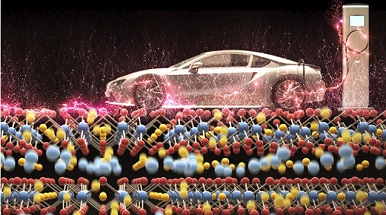
Energy storage is one of the keys to the management and distribution of energy resources in the coming years. Three major application areas can be identified, which are delineated by the size of the storage devices: portable applications, automotive and support/management of electricity grids.
One of the five research topics addressed by the FLEXILAB Project, Departments of Excellence Project 2018-2022, focuses on the optimisation and research in the field of rechargeable lithium batteries, which have higher performance in terms of power and energy density than aqueous systems such as lead or alkaline.
We interviewed Prof. Riccardo Ruffo, Professor of Physical Chemistry at the Department of Materials Science and work package leader of this research activity, to understand why it is important to focus on this type of energy storage device and what results have been achieved during the project.
What are the advantages of lithium batteries?
Lithium batteries, in their various configurations and formats, are undisputed predominant as power sources for electronic devices since years, and as for now they are increasingly applied in the automotive sector. The pressure that the automotive sector is putting on battery manufacturers is evidenced on the one hand by the reduction in the cost of stored energy (from $1000 to $100/kWh in the last 10 years), and on the other hand by the strong impetus for research that has not only focused on the engineering aspects of the battery pack, but also on the development and implementation of new chemistry processes (mixed graphite/silicon anodes, high-capacity cathodes, solid electrolytes).
What objectives has the FLEXILAB project set itself in this area, and what actions have been taken?
The aim of the research is to pursue two different paths: first, improve electroactive materials to produce new rechargeable lithium batteries with higher energy densities, better charging kinetics and lower costs, and second, explore the possibility of using alternative lithium chemistry processes by differentiating devices according to application areas.
In the case of lithium systems, the research followed the guidelines of the European community, focusing on the development of a solid-state battery with a metallic lithium anode. With regard to other chemistries, the research was mainly focused on sodium chemistry, for which new electrode materials were designed, developed and studied. Here, virtuous collaborations with companies and research institutions, such as RSE (Research on the Energy System), were also exploited.
Particular attention was paid in the search for materials for which the greater accessibility and lower production costs would coincide with a lower environmental impact of spent devices. The use of computational studies of ionic adsorption and diffusion made it possible to optimise experimental parameters and focus on the most promising solutions.
What were the achieved results?
The research groups involved in the WP have achieved important results with respect to the design and development of solid-state batteries, showing the importance of correct material coupling within lithium devices. Thanks to extensive internal collaborations, involving groups of experimental chemists, theoretical chemists, electrochemists and polymerists, the researchers involved in WP2 have fabricated materials that have been shown to perform at the state of the art in research on solid-state devices equipped with lithium metal.
In the field of lithium substitution, on the other hand, fundamental results were obtained concerning new electrode materials for sodium batteries. The department's researchers, together with colleagues at RSE, have produced seminal research on two-dimensional materials that have shown very promising lifetimes, enabling them to solve one of the problems underlying the development of rechargeable sodium ion batteries, namely the availability of materials for the negative electrode.
Finally, important results were also obtained concerning other post-lithium (potassium) chemistry, the use of organic materials and the modelling of materials and interfaces to gain a deeper understanding of the mechanisms underlying battery operation.